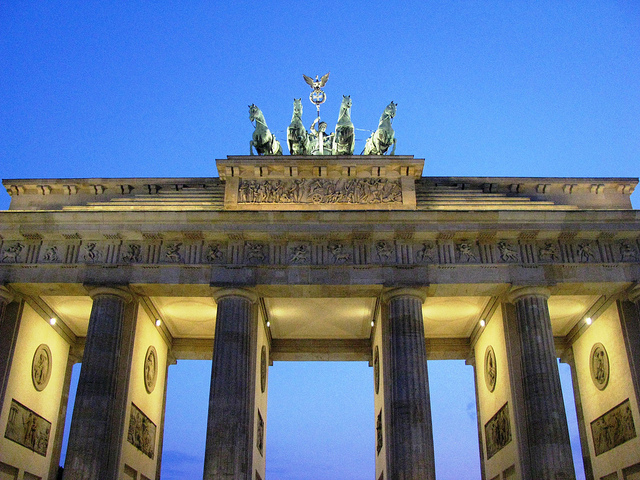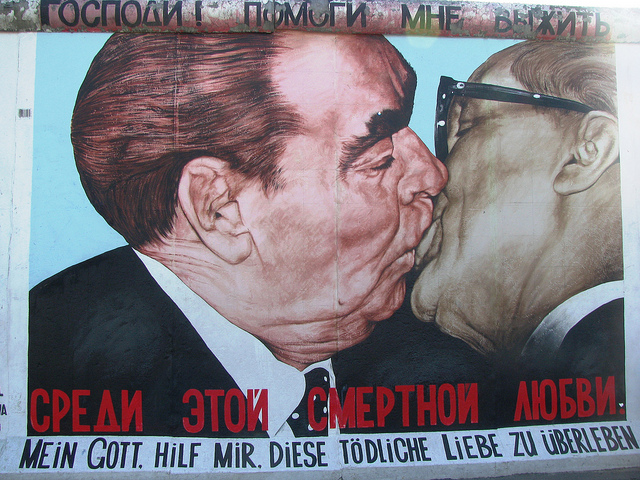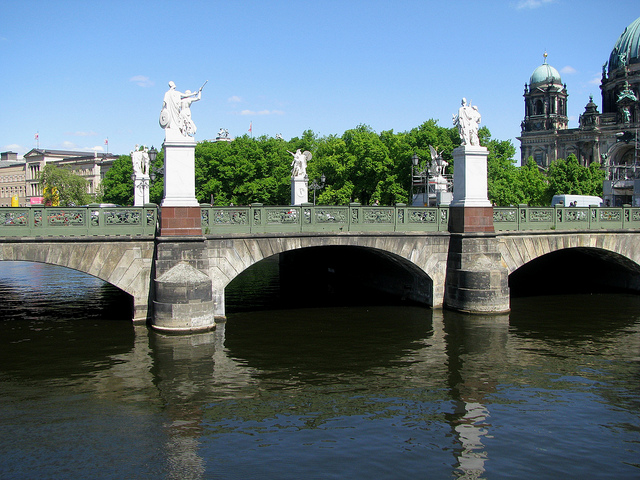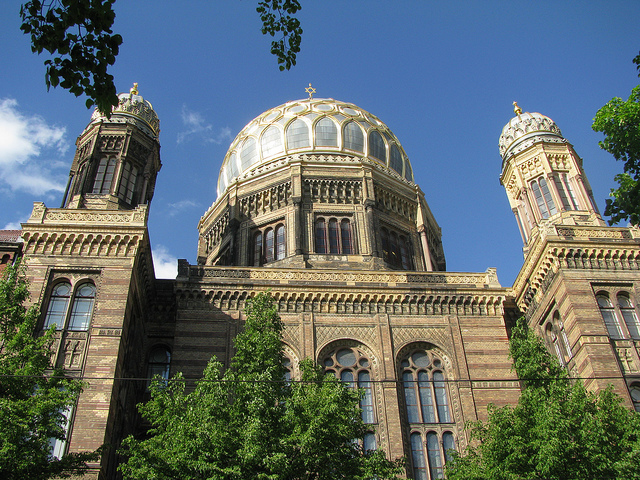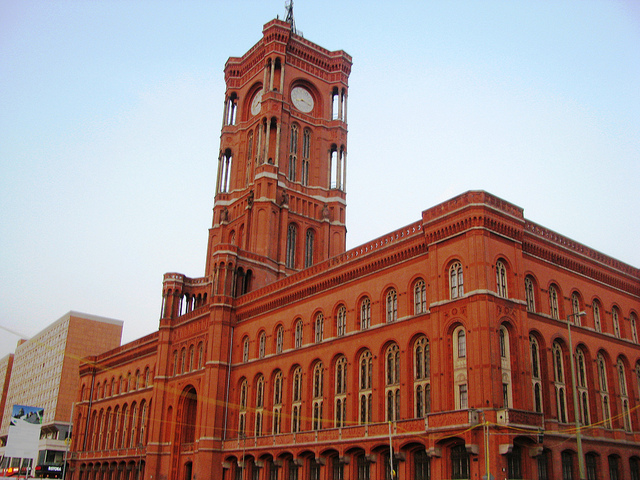Berlin has been a dream destination for me for a long time. I only had a chance to visit Berlin once, for one day, in August of 1989, indeed three months before the wall came down. I vividly remember the bright neon colours of West Berlin and the drab and grey atmosphere of East Berlin which I visited for a few hours after crossing famous Checkpoint Charlie. The hated Berlin Wall was located right behind the Reichstag, keeping East and West Berliners separated from each other for more than 28 years. Little could I have known that barely three months later, a miracle was to happen and the dreaded Berlin Wall came down and Germany was on its way to re-unification.
More than 20 years later, I knew that a lot would have changed in Berlin, and I was eager to explore this vibrant city again. On April 29, 2011 I flew with Air Berlin from Graz, Austria to the German capital and arrived at the modern Tegel Airport. It did not take long to get my luggage and soon I was out the door, lining up for a public bus that would take me downtown from where I ended up taking the subway to my hotel for the next four nights.

Hotel Pension Victoria is located in Berlin-Lichtenberg, about five stops on the S-Bahn from downtown. Lichtenberg used to be part of East Berlin and was also the home of the headquarters of the Stasi, the German secret police during the GDR years. It is also well known as the location of the Tierkpark Berlin in Friedrichsfelde, one of Berlin’s two zoos. Hotel Pension Victoria is situated very close to the Nöldnerplatz S-Bahn station and very reasonably priced with free Internet access. My cost per night was only 35 Euros for a single room with a washbasin. Two bathrooms are shared between four hotel rooms on each floor. It was a great budget-conscious home base for my discoveries in Berlin.
By about 4:30 pm I was ready to head downtown and enjoyed my ride on the Berlin S-Bahn (which stands for “Schnellbahn”, which literally means “fast train”). Its 15 lines are interconnected with the U-Bahn (subway) system and I found it to be an extremely efficient way to navigate the city. In less than 20 minutes I had reached the station “Hackesche Höfe”, one of Berlin’s main public transit stations.

I left the historic 1902 red brick railway station building behind and entered onto a large square, the Hackescher Markt, an important market square in Berlin that is framed by several restaurants with outdoor sitting areas. It’s a very popular gathering space for Berliners and full of activity.
Just a few steps away was my first destination: the Hackesche Höfe (“Hackesche Courtyards”), a complex of eight interconnected buildings with courtyards that was originally a complex of residential apartments and small commercial enterprises as well as cultural institutions. Opened in 1906, they are a prime example of Art Nouveau design and feature magnificent facades faced with multi-coloured glazed bricks.

In the early years, the Hackesche Höfe were a gathering place for Expressionist authors as well as location of the Jewish Women’s League and the Jewish student cafeteria. During the 1920s part of the buildings became the headquarters of a German department store by the name of DeFaKa (“Deutsches Familienkaufhaus” or “German family department store”). After many decades of neglect under the East German communist regime after World War II, the complex was completely restored during the 1990s and has become one of Berlin’s most popular sights.
Now it was time for lunch and I stopped at Trattoria Ossena, a nice pizzeria across the street where I enjoyed some spicy Italian pasta in a pleasant outdoor backyard patio. The waiters were extremely friendly and insisted on hugging me and taking a picture with me. Then I walked back past the Hackescher Markt to one of Berlin’s most important sights: the Berliner Dom (Cathedral of Berlin). I was planning to take a boat trip on the Spree River that would take me past some of Berlin’s most important sights.

So on a rather cool late April day, I embarked on a 1.5 half hour long cruise of the River spree which was part of the Berlin Welcome Card that would allow me to explore many of the city’s sights free of charge or at reduced prices. From the embankment area next to the cathedral, I headed off with Reederei Riedel, a local tour boat operator and we slowly moved past some of the city’s main sights.
We had a glance at the Nikolaiviertel (Nikolai Quarter), the oldest part of Berlin where the city was founded. I admired the Museumsinsel (Museum Island), the northern tip of the Spree Island which is home to one of the most important museum complexes in the world. It houses the Altes Museum (Old Museum), the New Museum, the Old National Gallery, the Pergamon Museum and the Bode Museum. These museum buildings were constructed between 1830 and 1930 and together form a UNESCO World Heritage Site.

Turning around at the Mühlendamm Bridge we headed back west on the Spree River, past the Cathedral and Museum Island, and saw the Reichtstag Building, the German parliament building. Further west we admired the gleamingly modern Hauptbahnhof (main train station of Berlin) and further west the “Haus der Kulturen der Welt” (House of Cultures of the World), an iconic building designed in 1957 that today is Germany’s national centre for contemporary non-European art. Its unique round roof structure has given it the nickname “the pregnant oyster”. Our tour guide also explained the various sculptures that are carved into the bridges that span the Spree River.
After this introductory river tour it was time to explore the city on foot.
